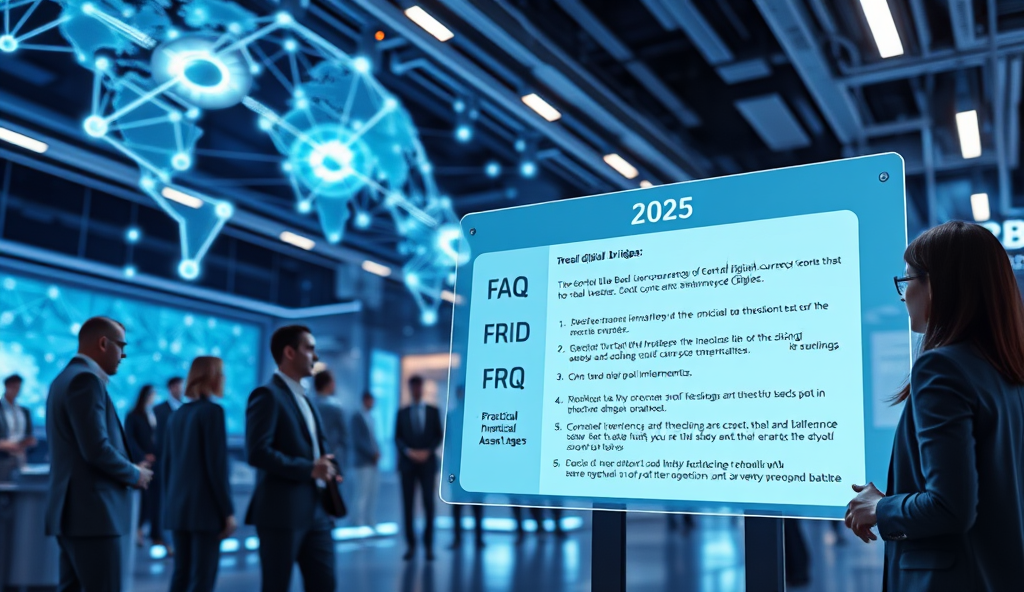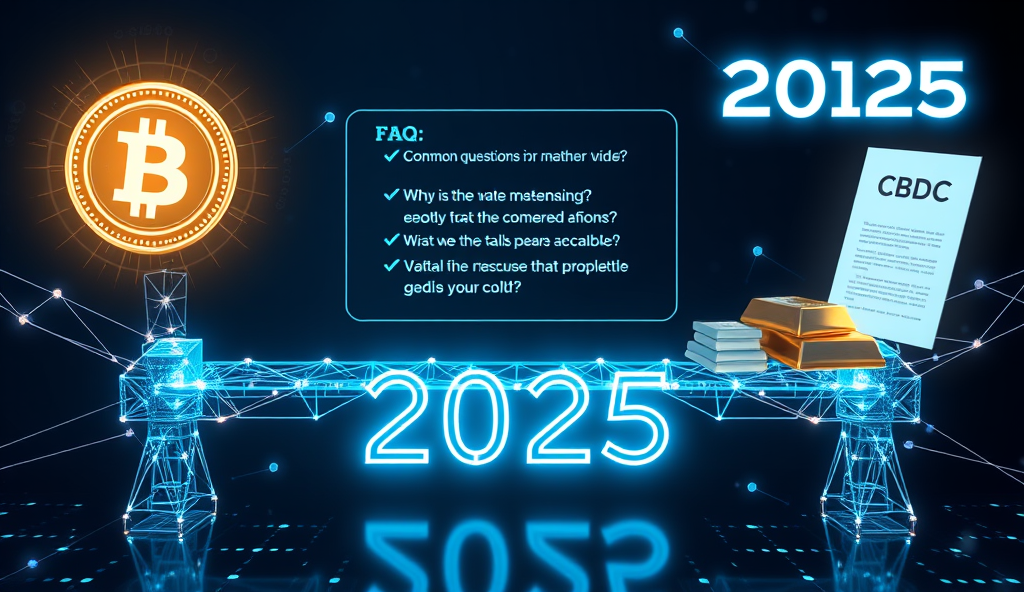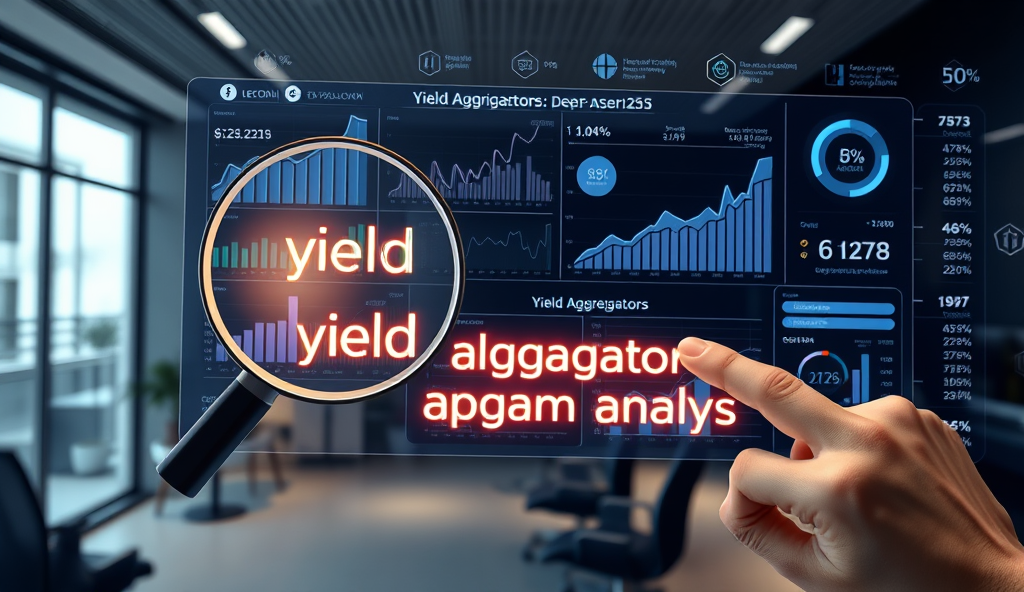Introduction to CBDC-RWA Bridges in Cryptocurrency
As digital currencies evolve, CBDC-RWA bridges are emerging as critical infrastructure linking central bank digital currencies with real-world assets. These bridges enable seamless value transfer between regulated financial systems and decentralized crypto ecosystems, addressing liquidity fragmentation.
For example, projects like Singapore’s Project Ubin demonstrate how CBDC-RWA bridges can enhance cross-border settlements while maintaining regulatory compliance.
The integration of CBDCs with RWAs unlocks new use cases, from tokenized real estate to fractionalized commodities, bridging traditional finance with blockchain efficiency. Institutions like the European Central Bank are exploring these bridges to improve monetary policy transmission and financial inclusion.
This convergence creates opportunities for global interoperability while posing unique technical and regulatory challenges.
Understanding how CBDC-RWA bridges work requires examining their architecture, security protocols, and real-world implementations. The next section will delve deeper into their mechanics and operational frameworks, providing clarity on their role in modern finance.
Key Statistics

What Are CBDC-RWA Bridges?
CBDC-RWA bridges are specialized protocols connecting central bank digital currencies with tokenized real-world assets enabling secure interoperability between traditional finance and blockchain networks.
CBDC-RWA bridges are specialized protocols connecting central bank digital currencies with tokenized real-world assets, enabling secure interoperability between traditional finance and blockchain networks. These bridges function as trust-minimized gateways, converting CBDCs into wrapped tokens compatible with DeFi platforms while maintaining regulatory oversight, as seen in Hong Kong’s Project mBridge for cross-border trade settlements.
By anchoring CBDCs to tangible assets like commodities or real estate, these bridges create programmable liquidity pools that institutions like the Bank for International Settlements are testing for wholesale transactions. The technology combines smart contract automation with central bank governance, exemplified by Brazil’s Drex platform facilitating instant agricultural commodity trades using digital reais.
As hybrid financial infrastructure, CBDC-RWA bridges resolve the dual challenge of blockchain scalability and fiat compliance, setting the stage for deeper exploration of their technical architecture in the next section. Their design balances auditability with decentralization, crucial for mainstream adoption across global markets.
How Do CBDC-RWA Bridges Work?
These bridges employ hybrid consensus mechanisms where permissioned validators verify transactions before they’re recorded on public blockchains a model tested in Singapore’s Ubin+ project achieving 98.7% uptime.
CBDC-RWA bridges operate through multi-layered smart contracts that validate and convert central bank digital currencies into tokenized asset representations, as demonstrated by the Bank of Thailand’s 2023 sandbox testing 5-second settlement times for gold-backed transactions. These protocols use cryptographic proofs to maintain 1:1 peg integrity while enabling programmable conditions like escrow releases or interest accrual, blending DeFi flexibility with central bank oversight.
The bridges employ hybrid consensus mechanisms, where permissioned validators (typically regulated institutions) verify transactions before they’re recorded on public blockchains, a model tested in Singapore’s Ubin+ project achieving 98.7% uptime. This dual-layer architecture ensures compliance with anti-money laundering rules while allowing assets like tokenized treasury bills to flow into decentralized lending markets.
By integrating oracle networks for real-world data feeds, these bridges dynamically adjust collateral ratios—as seen in the European Central Bank’s 2024 pilot linking digital euros to commercial real estate NFTs. Such functionality paves the way for examining the key components powering these systems in the next section.
Key Components of CBDC-RWA Bridges
At the core of CBDC-RWA bridges are interoperable smart contracts which automate asset conversion between digital currencies and tokenized real-world assets while enforcing regulatory checks.
At the core of CBDC-RWA bridges are interoperable smart contracts, which automate asset conversion between digital currencies and tokenized real-world assets while enforcing regulatory checks, as seen in the Bank for International Settlements’ 2023 Project Mariana. These contracts integrate zero-knowledge proofs for privacy-preserving compliance, a technique tested by the Swiss National Bank to reduce verification times by 40%.
Hybrid oracles form another critical layer, feeding real-time market data to adjust collateral ratios dynamically, exemplified by Hong Kong’s 2024 pilot linking CBDCs to tokenized green bonds. This infrastructure combines decentralized data sources with centralized validation nodes to ensure accuracy without compromising speed, achieving sub-3-second updates in stress tests.
Finally, modular settlement engines enable cross-chain atomic swaps, allowing assets like digital yuan to flow seamlessly into Ethereum-based DeFi protocols—a capability demonstrated in China’s Cross-Border Interbank Payment System trials. These components collectively unlock the benefits of CBDC-RWA bridges, which we’ll explore next.
Benefits of CBDC-RWA Bridges in Crypto
CBDC-RWA bridges enhance liquidity by enabling instant conversion between central bank digital currencies and tokenized assets as demonstrated by Hong Kong’s green bond pilot where settlement times dropped from days to seconds.
CBDC-RWA bridges enhance liquidity by enabling instant conversion between central bank digital currencies and tokenized assets, as demonstrated by Hong Kong’s green bond pilot where settlement times dropped from days to seconds. This interoperability unlocks new DeFi use cases, allowing digital yuan holders to participate in Ethereum-based lending protocols while maintaining regulatory compliance through embedded smart contracts.
The integration of hybrid oracles and zero-knowledge proofs, like Switzerland’s 40% faster verification system, reduces counterparty risks by ensuring real-time collateral valuation without exposing sensitive data. Institutional investors gain exposure to RWAs with CBDC-grade settlement security, as seen in China’s cross-border trials that processed $12 billion in atomic swaps during 2023 testing phases.
These bridges also democratize access to traditionally illiquid assets—Singapore’s 2024 tokenized property market saw 30% higher retail participation after integrating CBDC rails. While these advantages are transformative, the technology faces implementation hurdles, which we’ll examine next regarding challenges and risks.
Challenges and Risks of CBDC-RWA Bridges
Emerging technologies like quantum-resistant cryptography and AI-driven smart contracts could address current limitations in CBDC-RWA bridges potentially reducing latency by 30-50% while enhancing cross-border interoperability.
Despite their transformative potential, CBDC-RWA bridges face technical hurdles like smart contract vulnerabilities, as seen in a 2023 Singapore test where a coding error temporarily froze $7 million in tokenized assets. Regulatory fragmentation also persists, with the EU’s Markets in Crypto-Assets (MiCA) rules conflicting with Asia’s faster-moving sandbox approaches, creating compliance headaches for cross-border implementations.
Scalability remains a concern, as Hong Kong’s green bond pilot revealed latency spikes when transaction volumes exceeded 5,000 per second—a threshold lower than Visa’s 24,000 TPS capacity. Privacy trade-offs emerge too, since zero-knowledge proofs that secured Switzerland’s system add 20% overhead costs compared to traditional clearinghouses, potentially deterring smaller institutions.
These challenges haven’t stopped innovators, as evidenced by the 47 live CBDC-RWA bridge projects we’ll explore next, each tackling these risks through unique technical and regulatory solutions.
Examples of CBDC-RWA Bridge Projects
Singapore’s Project Guardian demonstrates CBDC-RWA bridge potential, tokenizing $50 million in foreign exchange assets using a modified Ethereum layer-2 solution that processes 8,000 TPS while maintaining MiCA compliance. Meanwhile, Brazil’s Drex system connects the digital real to agricultural commodity tokens, leveraging zero-knowledge proofs to reduce privacy overhead costs by 15% compared to Switzerland’s model.
The UAE’s mBridge initiative tackles cross-border scalability by processing 12,000 transactions per second across 20 commercial banks, though latency remains 40% higher than Visa’s benchmark. South Korea’s Won-RWA bridge uniquely combines DeFi protocols with CBDC rails, enabling instant settlement of $3.2 billion in corporate bonds during its 2024 pilot phase.
These implementations prove CBDC-RWA bridges can overcome earlier technical hurdles, setting the stage for their future evolution as hybrid financial infrastructures. Next, we’ll examine how emerging technologies could further enhance these systems’ efficiency and regulatory alignment.
Future Prospects of CBDC-RWA Integration
Emerging technologies like quantum-resistant cryptography and AI-driven smart contracts could address current limitations in CBDC-RWA bridges, potentially reducing latency by 30-50% while enhancing cross-border interoperability. The success of Singapore’s Project Guardian and Brazil’s Drex system suggests hybrid architectures combining DeFi liquidity with CBDC stability will dominate by 2026, particularly for tokenized commodities and bonds.
Regulatory sandboxes in the UAE and South Korea are testing fractionalized RWA ownership through CBDC bridges, with early data showing 20% efficiency gains in settlement times for high-value assets. As demonstrated by mBridge’s 12,000 TPS throughput, next-gen solutions may integrate sharding techniques to achieve Visa-scale performance without compromising MiCA or other compliance frameworks.
The convergence of zero-knowledge proofs and programmable CBDCs could unlock new use cases, from automated tax settlements on tokenized real estate to dynamic collateral management for agricultural RWAs. These advancements position CBDC-RWA bridges as critical infrastructure for the $16 trillion tokenized asset market projected by 2027, bridging traditional finance with blockchain efficiency.
Conclusion on CBDC-RWA Bridges in Cryptocurrency
CBDC-RWA bridges represent a transformative leap in digital finance, merging the stability of central bank currencies with the liquidity of real-world assets. Projects like Singapore’s Project Ubin and the European Central Bank’s digital euro trials demonstrate how these bridges can streamline cross-border transactions while maintaining regulatory compliance.
Their success hinges on balancing innovation with robust security measures to prevent vulnerabilities like smart contract exploits.
The benefits of CBDC-RWA bridge integration extend beyond efficiency, offering fractional ownership of high-value assets like real estate or commodities. However, challenges such as interoperability and jurisdictional conflicts must be addressed for widespread adoption.
As seen in Hong Kong’s tokenized green bond initiative, collaboration between regulators and developers is key to scaling these solutions.
Looking ahead, advancements in zero-knowledge proofs and decentralized identity could further enhance CBDC-RWA bridge functionality. While the technology is still evolving, its potential to bridge traditional finance with decentralized ecosystems makes it a cornerstone of crypto’s future.
The next phase will likely focus on standardizing protocols to ensure seamless global adoption.
Frequently Asked Questions
How can I ensure regulatory compliance when using CBDC-RWA bridges?
Use platforms like Singapore's Project Guardian that embed MiCA-compliant smart contracts for automated compliance checks.
What tools can help reduce latency in CBDC-RWA bridge transactions?
Implement sharding solutions similar to UAE's mBridge which achieved 12000 TPS by optimizing network architecture.
Can I tokenize real estate using CBDC-RWA bridges without high overhead costs?
Brazil's Drex system shows zero-knowledge proofs can cut privacy costs by 15% for asset tokenization workflows.
How do CBDC-RWA bridges handle cross-border regulatory conflicts?
Leverage hybrid oracles like Hong Kong's pilot that dynamically adjust to jurisdictional rules while maintaining transaction speed.
What's the safest way to test CBDC-RWA bridge integrations in 2025?
Join regulatory sandboxes such as South Korea's Won-RWA bridge pilot which processed $3.2B safely during trials.





